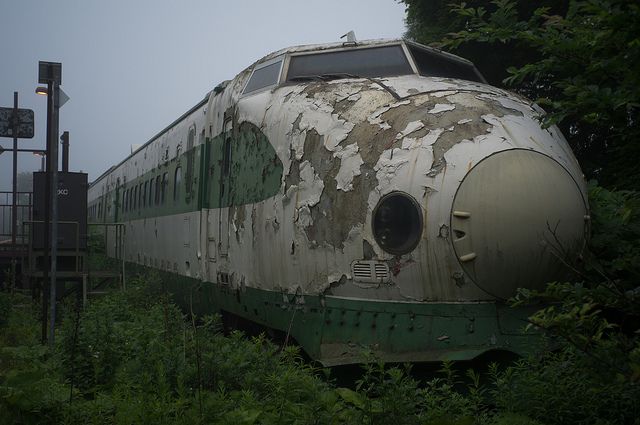Key Facts about Ben Franklin Transit
Introduction and Summary
New research released by Washington Policy Center, a non-partisan, public policy think tank with offices in Seattle, Olympia, Spokane and Tri-Cities, provides key facts about the Ben Franklin Transit system.
Ben Franklin Transit (BFT) is a Public Transportation Benefit Authority and serves the Tri-Cities region in southeastern Washington state. BFT provides fixed route bus, demand response and a robust vanpool program to residents in or near the cities of Richland, Kennewick, Pasco and Prosser. The entire service area includes a population of about 211,170 residents, which makes BFT the eighth largest transit service area in Washington.
Ben Franklin Transit’s governing body includes a nine-member board of directors made up of local elected officials.
BFT’s total operating revenues in 2010 were $30.1 million, with total operating expenses of $26.7 million. BFT ended 2010 with $4.3 million in cash assets. 80% ($23.9 million) of BFT’s revenues were derived from sales tax collections, while total farebox revenues were only $3.9 million (13% of total revenues) for the year. BFT directors impose the maximum sales tax they are allowed by state law, 0.6%.
Like most transit agencies across the country, BFT has experienced falling bus ridership and rising costs. Some of this is a result of the agency’s vanpool program, a bright spot for BFT officials. Over the last decade, while bus ridership has fallen, vanpool ridership has doubled. This is great news because vanpools operate at a fraction of the costs and users, not taxpayers, pay most of the operating expenses. In 2009, taxpayers subsidized $3.16 for every passenger trip made on BFT’s buses, while vanpools only required taxpayers to cover 25 cents per passenger trip.
An area of concern is BFT’s annual operating expenses, which rose more than 140% between 1996 and 2009. Some of this growth was a result of annexing new service areas, which naturally leads to higher operating expenses. But the annexations are not the only reason for the explosive growth in costs, and at least for the bus program, the expanded service areas are not translating to higher ridership.
The bus program, which represents the bulk of BFT’s system, carries fewer passengers than it did in 1996, while bus operating costs have gone the other way, rising about 60% over the same time period. This trend means taxpayers are paying more but receiving less. On the other hand, while expenses for BFT’s vanpool and demand response programs have also risen, passenger demand has more or less kept pace.
And employee salaries, benefits and wages rose 120%, from $8.2 million in 1996 to $18 million in 2009. The total number of employees rose by only about 12% between 1996 and 2009, indicating again that additional personnel to serve the annexed areas are not the significant factor for the growth. The average annual salary increased about 32% and overtime compensation rose less than one percent. While average salaries and overtime did rise, generous fringe benefits stand out as the main reason for the significant growth in personnel expenses.
Another area of concern is the demand response program, which is BFT’s least efficient mode of public transit service (typical among most transit agencies). In 2009, the demand response system represented about half of BFT’s operating costs but served only 12% of the agency’s overall passenger demand, resulting in a loss of more than $20 per ride.
Recommendations
BFT officials should respond to changes in service demand and allocate resources proportionately. Fewer people choose to ride a bus, yet the bus program’s operations continue to grow more expensive. Vanpools are clearly a more efficient use of public resources because they better serve the geographic and commuting demands of the Tri-Cities region, and passengers cover nearly 90% of operating costs. Officials could reduce low-demand fixed bus routes altogether or replace them with vanpools or smaller vehicles that operate only during peak times and provide travel vouchers for private options in place of the more expensive demand response system. BFT officials must also reduce personnel costs and gain control of fringe benefits. As passenger demand continues to shift, BFT officials should re-examine their tax authority and how the money is spent.
The following data illustrates key performance measures of the Ben Franklin Transit system:
Primary BFT Modes
- Buses: vehicles operated by a paid transit driver over a fixed route. Bus routes can be located in dense urban cores or over long distances connecting population centers
- Vanpools: vans operated by a volunteer driver and passengers who share a common origin and destination. Vanpools generally serve intercity commuters traveling to and from employment
- Demand Response: transit vehicles operated by a paid transit driver that can be requested by passengers and do not operate over a fixed route. Passengers sometimes have to meet certain criteria, such as low income or physical disabilities, to qualify for Demand Response service
BFT Taxing Authority and Funding
- Tax Authorized: 0.6% sales and use tax
- 0.3 imposed in May 1981
- 0.3 imposed in March 2002
2009 Revenue Sources
- Fare Revenues (14%) $3,968,962
- Local Funds (73%) $21,137,656
- State Funds (13%) $3,736,617
- Federal Funds (0%) $0
- Other Funds (1%) $226,904
- Total Operating Revenues Expended $29,070,139
| 2009 Capital Expenses | 1996-2009 Cumulative Expenses |
| $6,356,965 | $35,879,626 |
Key Modal Performance (2009)
| Operating Expenses | Fare Revenues | Annual Unlinked Trips | Public Subsidy Required |
Bus | $12,764,250 | $1,194,936 | 3,663,535 | $11,569,314 |
| Demand Response | $13,641,590 | $406,293 | 656,510 | $13,235,297 |
Vanpool | $2,664,299 | $2,367,733 | 1,177,060 | $296, 566 |
Total | $29,070,139 | $3,968,962 | 5,497,105 | $25,101,177 |
2009 | Operating Cost per Trip | Farebox Recovery Rate | Operating Subsidy per Trip |
| Bus | $3.48 | 9.36% | $3.16 |
| Demand Response | $20.78 | 2.98% | $20.16 |
| Vanpool | $2.26 | 88.87% | $.25 |
Key Performance Trends (1996-2009)
| Total System | 1996 | 2009 | Percent Change |
| Operating Expenses | $12,065,425 | $29,070,139 | 140.94% |
| Salaries/Wages/Benefits | $8,200,517 | $18,006,318 | 119.58% |
| Average waves per employee | $30,132 | $39,751 | 31.92% |
| Employees earning $75k + | 5 | 8 | 60% |
| Total overtime | $364,992 | $367,589 | 0.71% |
| Annual Passenger Trips | 4,469,510 | 5,497,105 | 22.99% |
| Annual Passenger Miles | 51,453,418 | 71,616,439 | 39.19% |
| Buses | 1996 | 2009 | Percent Change |
| Operating Expenses | $8,003,815 | $12,764,250 | 59.48% |
| Annual Passenger Trips | 3,721,152 | 3,663,535 | -1.55% |
| Operating Expense per Trip | $2.15 | $3.48 | 61.86% |
| Annual Passenger Miles | 26,878,512 | 22,385,076 | -16.72% |
| Vanpools | 1996 | 2009 | Percent Change |
| Operating Expenses | $911,923 | $2,664,299 | 192.16% |
| Annual Passenter Trips | 564,224 | 1,177,060 | 108.62% |
| Operating Expense per Trip | $1.62 | $2.26 | 39.51% |
| Annual Passenger Miles | 22,523,904 | 46,078,044 | 104.57% |
| Demand Response | 1996 | 2009 | Percent Change |
| Operating Expenses | $3,149,687 | $13,641,590 | 333.11% |
| Annual Passenger Trips | 184,134 | 656,510 | 256.54% |
| Operating Expense per Trip | $17.11 | $20.78 | 21.45% |
| Annual Passenger Miles | 2,051,002 | 3,153,319 | 53.75% |
Transit data was obtained from the National Transit Database (1996 profile, 2009 profile) and directly from Ben Franklin Transit officials. The 1996 and 2009 transit profiels created by the NTD were the earliest and most recent years available.
Download a PDF of Key Facts about Ben Franklin Transit here.





